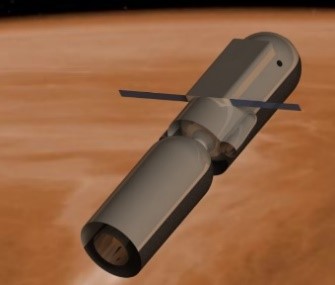Of course, it is impossible to launch an Ariane 6 from the atmosphere of Venus. The task of launch the MMV is assigned to a specific reusable launcher. The pitcher consists of two stage.
2.2.1. 1st Stage
The first stage must be powerful but small enough to be launched by the ariane 6. It therefore uses methane as a fuel, which, compared to hydrogen, implies a higher mass of propellants (Lower Isp) but a higher reduced volume (higher density). So it must have a small tank liquid hydrogen for recovery. The stage includes reserves of extra fuel. They allow for a flare-up after separation from the 2nd stage, to reduce the distance and thus retract more quickly at the launch pad and start filling the stage as soon as possible.
| 1st stage | Note | Mass (kg) |
| Engine | Raptor according to known data | 900 |
| Structure – tank | With hydrogen tank | 2 000 |
| Balloons | 250 | |
| Hydrogen Recovery | 500 | |
| Rcs | 200 | |
| Atmospheric propulsion system | 100 | |
| Computer | 50 | |
| Ergols back fast | Delta-V – 341 m/s | 500 |
| Design Reserve | 500 | |
| Mass empty | L – 19.75 m, diam – 4.5m | 5 000 |
| M ergols | 75 000 | |
| Isp (s) | 330 | |
| thrust (kN) | 1 900 |
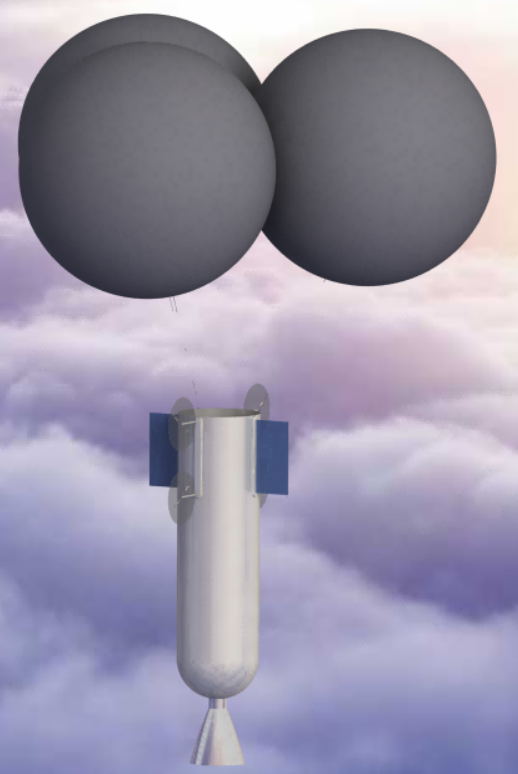
2.2.2 2nd stage
The 2nd stage uses hydrogen for its performance and to reduce the size of the first stage. Because it is designed to launch MMP or CRT (see 3.2.3) that have autonomous propulsion, it is not put into orbit, which avoids having to need propellants for braking. It also means that it will “fall back” far from the base camp, there are several elements to return.
- The convection of the winds towards the equator brings back naturally the floor towards the right latitude.
- Depending on the direction of rotation of the atmosphere, the stage will be in front of the base. Given the wind speed gradient depending on the altitude, the stage will be lower (slower wind) than the base to be caught.
- The stage is equipped with a propulsion system propeller. At first, it is used to accelerate the return to the wind. Once located a few kilometres from the lens, the base and the stage are in the same air mass (so they move at the same speed) and a propulsion allows you to get within 100 m of the launch pad.
- Once the approach is completed, drones autonomous cable carriers coming from the launch pad will tie the stage to bring it back on the first stage.
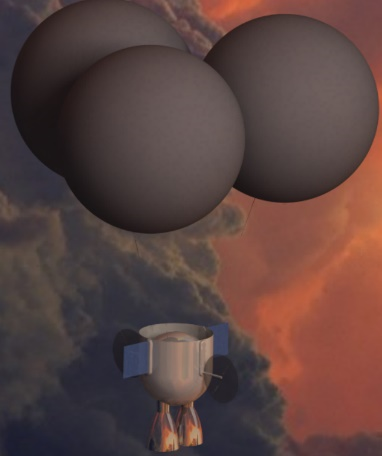
The return can still take several weeks. This delay has no impact on the time between two shots because it will be masked by the filling time of the first floor.
| upper stage | Note | Mass (kg) |
| Engines | 2 RL10 | 550 |
| Tanks – structure | 950 | |
| Balloons | 100 | |
| Hydrogen Recovery | 175 | |
| Rcs | 100 | |
| Atmospheric propulsion system | Electric motor – solar panel | 150 |
| Computer | 50 | |
| Design Reserve | 175 | |
| Mass empty | L – 7.5 m, diam – 4.5m | 2 250 |
| M ergols | 17 500 | |
| Isp (s) | 464 | |
| Thrust (kN) | 2 x 220 |
2.2.3 Reusable Captive Tug (RCT)
Given the size of the launcher, the launcher is not capable of launching MMV on an interplanetary trajectory. In the first round of launch, the Venusian rocket will put into orbit a tug waiting for the time the rocket refuels to launch the MMV. Both vehicles will then make an orbital mooring so that the tug can enhance MMV’s orbit. The latter alone will be able to complete the injection into orbit of transfer. Since the tug remains in Venusian orbit, it can then atmospheric braking to get back to the launch pad.
During the 200-day MMP wait, RCT will be warmed by the sun (2600 W/m2) and Venus (1900 W/m2). To keep liquid propellant, the vessel is therefore equipped with a “cold pack” consisting of two “ombrella” that knock down the feed received to a few dozen Watts. The first covers the front section (closer) always facing the sun thanks to gyroscope control. The second covers the upper and rear surface to protect against radiation Venusian. Radiators are installed to eliminate thermal flow Residual.
| RCT | Note | Mass (kg) |
| Engine | RL10 | 275 |
| Structure – tank | 1 000 | |
| Thermal shield | 400 | |
| Ballons | 100 | |
| Hydrogen Recovery | 175 | |
| Rcs | 100 | |
| Atmospheric propulsion system | 50 | |
| Computer | 25 | |
| Cold pack | Keeps the propellants liquid | 150 |
| Design Reserve | 200 | |
| Mass empty | L – 8 m, D 3.5m | 2 500 |
| M ergols | 10 500 | |
| Isp (s) | 464 | |
| Thrust (kN) | 220 |
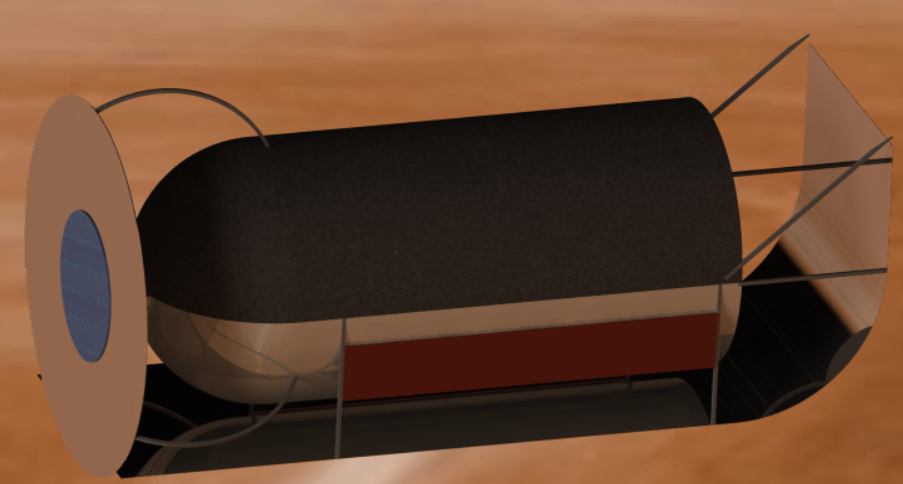
2.2.4. performance calculation
At altitude the volume mass of the air is lower than at sea level on the Earth (see ‘1.3‘). Moreover, as the mass of the planet is lower, these two factors reduce aerodynamic, gravitational and orbital velocity losses, which makes a Venusian orbit easier than on Earth. Nevertheless, for maintain a significant margin of safety, and to consider re-use launcher, it is best to keep a Delta-V lens 9300 m/s low orbit. The launcher alone is not capable of put the payloads (RCT and MMV) into orbit, so they will have to turn on their engine to complete the launch into orbit. In order to have a flight profile identical, RCT and MMV have the same full mass, and provide the same Delta-V to complete the launch into orbit.
Putting RCT into orbit
| Initial M (t) | M ergols (t) | M empty (t) | Isp (Ns/kg) | Delta-V (m/s) | |
| RCT | 13,00 | 5,23 | 7,77 | 4 550,0 | 2 340,45 |
| 2nd stage | 32,75 | 17,50 | 15,25 | 4 500,0 | 3 439,45 |
| 1st stage | 112,75 | 75,00 | 37,75 | 3 237,3 | 3 542,21 |
| DELTA-V total | 9 322,12 |
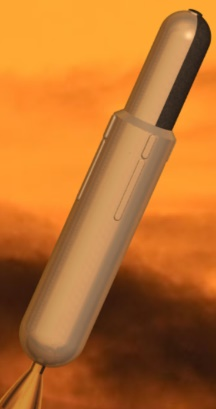
Putting the MMV into orbit
| Initial M (t) | M ergols (t) | M empty (t) | Isp (Ns/kg) | Delta-V (m/s) | |
| MMV | 13,00 | 5,40 | 7,60 | 4 360,0 | 2 340,45 |
| 2nd stage | 32,75 | 17,50 | 15,25 | 4 500,0 | 3 439,45 |
| 1st stage | 112,75 | 75,00 | 37,75 | 3 237,3 | 3 542,21 |
| DELTA-V total | 9 322,12 |
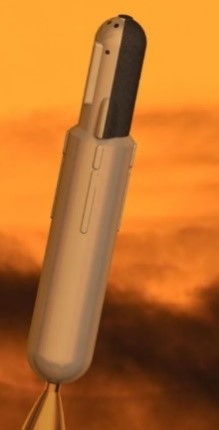
escape of MMV
| Initial M (t) | M ergols (t) | M empty (t) | Isp (Ns/kg) | Delta-V (m/s) | |
| MMV | 7,60 | 2,60 | 5,00 | 4 360,0 | 1 825,58 |
| RCT | 15,37 | 5,27 | 10,10 | 4 500,0 | 1 910,46 |
| DELTA-V total | 3 736,04 |
